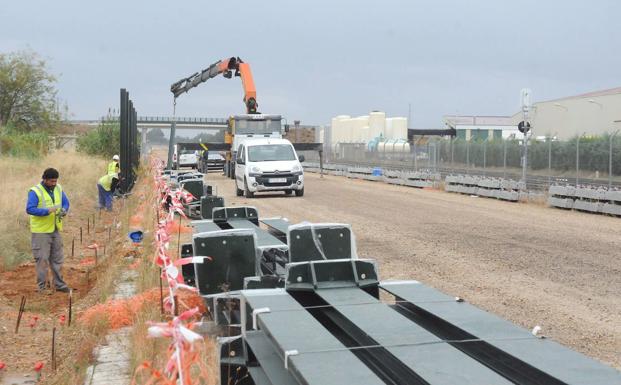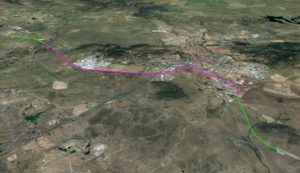
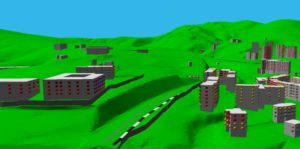
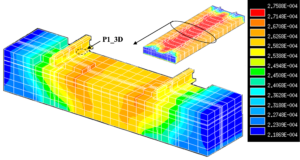
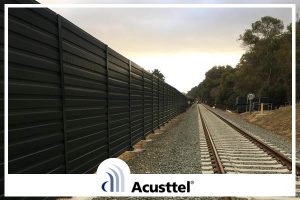
The acoustic and vibratory protection projects correspond to the high-speed lines Vitoria – Bilbao – San Sebastián, Section Bergara – Irún and the line Madrid – Extremadura, section access branches access to Plasencia, Cáceres and Mérida
Typsa is a national leader in various environmental works, which guarantees its solvency, reliability and continuity.
Among others, TYPSA has extensive experience in territorial characterization studies with GIS tools, Environmental Impact Studies and Environmental Integration Projects for railways and roads.
Acusttel is a specialized acoustic engineering that since 1997 works in the field of noise and vibrations.
Throughout these years, the Acusttel firm has carried out numerous works, highlighting studies and noise maps related to the field of building, environmental protection and infrastructure. The company’s activities are divided into three main groups: Consulting, Laboratory and R + D + i.
Acusttel and Typsa have collaborated in various acoustic and vibration protection projects in transport infrastructures, both nationally and internationally.
It should be noted that the UTE ACUSTTEL – TYPSA prepared the acoustic study of the acoustic protection project and vibratory study of the Vitoria – Bilbao – San Sebastián high-speed line. Section: Bergara – San Sebastian. Sections: Bergara – San Sebastián, as well as the acoustic and vibratory protection project for the Madrid – Extremadura – Portuguese Border High Speed Line. Plasencia – Badajoz section.
A project to control noise and vibrations in railway infrastructures requires knowledge and experience in the treatment of very important aspects for the definition of the most suitable acoustic and vibratory solutions;
- Use of updated traffic data and detailed mapping.
- Realization of a precise acoustic model, based on an inventory of sensitive buildings, a propagation model of linear noise sources with the calibration of the same based on the field measurements carried out and the incorporation into it of possible existing obstacles.
- Analyse the most effective location of acoustic and vibration protection measures with a correct dimensioning that allows their execution. For this, a multicriteria analysis will be applied in which variables such as the effectiveness of the proposal, the construction difficulty and the state of the work platform at the time the construction is planned will be taken into account.
- Choice of the ideal material and finish, not only in search of its technical suitability but integration into the landscape, where they will be installed and taking into account the future maintenance needs of the infrastructure.
- Thorough definition of foundations and supporting structure.
Acoustic protection projects require the collaboration of different engineering disciplines for their proper development
This typology of projects is structured in three different phases;
Phase 1: Preliminary work for the preparation of acoustic and vibratory studies;
- Documentary compilation of starting cartography and inventory.
- Preliminary field study of noise and vibration analysis.
Phase 2: Drafting of noise and vibration studies.
- The result of this phase will give rise to the construction project for acoustic and vibratory protections.
Phase 3: Drafting of construction projects.
Particularities of the acoustic and vibratory protection project of the access branches to Plasencia, Cáceres and Mérida.
The project for access branches to Plasencia, Cáceres and Mérida includes the analysis of urban areas close to the affected municipalities, where greater complications are expected from the point of view of reducing the impact of noise and vibrations and rural areas with low density of population.
The Carrascalejo connection, as a particular example, despite having a lower global impact requires a specific review of possible receivers affected by the infrastructure.
In particular, it is a matter of analysing the possible effect of noise and vibrations in the connecting branches of the high – speed line Madrid-Extremadura with the existing conventional lines that give access to the main neighbouring cities, in the section that goes from Plasencia to Mérida.
The total length of the set of branches and of the conventional line continuation to the closest station, in each case is approximately 40 kilometres.
The acoustic and vibratory studies present in the platform projects will serve as a starting point for the new ones, which will be duly updated
Particularities of the acoustic protection project for the section between Bergara and Irún de la Y Vasca.
The New High Speed Line Vitoria – Bilbao – San Sebastián – French Border is part of the Atlantic branch of the Priority Project No. 3 of the European Union, giving continuity in Spanish territory to the Madrid – Valladolid – Vitoria – French Border.
This line will connect the three capitals of the Basque Autonomous Community to each other by high speed and will bring the Basque Country closer to the rest of the Peninsula and France.
In addition to allowing the interconnection of the three Basque capitals, the new railway infrastructure will have a connection to Pamplona through the “Navarra´s Corridor”.
When it starts the service, travel times by rail will be drastically reduced for the three Basque capitals. Mainly notable is the reduction in travel time between Vitoria-Bilbao and Vitoria-San Sebastián, around 60 percent, and 80 percent in the Bilbao-San Sebastián connection.
To overcome the significant orographic difficulties of the terrain to be crossed, a large number of unique structures must be built. Viaducts and tunnels represent between 60% and 80% of the total railway route.

Acusttel has an extensive experience in noise and vibration control in railway infrastructures.
Acusttel has extensive experience in drafting construction projects for acoustic and vibration protection with a highly qualified human team experienced in providing the best noise and vibration solutions to the environmental problems of transport infrastructures.
Acusttel began to develop the applicable technology, FEM vibration modeling, for companies in various sectors such as textiles, footwear, etc … that wanted to make use of part of their products and production systems to develop solutions for construction, mainly for systems multilayer insulation, impact noise and vibration protection sheets, etc …
Later we were able to apply this technology for the modeling of railway infrastructures, initially, for vibration protection projects in ADIF and later for different administrators of railway infrastructures in Spain such as FGV, FGC, Metro Madrid, etc …these experiences in our natural market they opened the door to large international projects in South America, the Middle East, Western Asia and Central and Eastern Europe.

